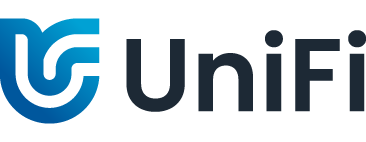For every extra month spent on paper invoices and manual approvals, you are writing a silent cheque to inefficiency.
Automating your P2P process with a platform such as UniFi P2P Enterprise Suite can significantly reduce that cost and shorten processing time from weeks to hours.
Even so, many finance leaders continue to delay action, waiting for what feels like the “right moment” to modernise.
Today, we will turn that hesitation into measurable impact — highlighting how each quarter of inaction increases operational costs, drains working capital, and undermines procurement efficiency, and why accelerating now is the most financially sound decision.
Opportunity Cost: The Cash Lost Each Month
Each month spent manually handling invoices increases your operational overhead.
Processing costs add up invoice by invoice, especially for organisations with high transaction volumes.
Procurement automation replaces those recurring manual steps with structured, efficient workflows.
This allows early adopters to avoid unnecessary costs and redirect resources quickly.
For example, one organisation was able to use UniFi to automate 250,000 monthly invoices into NetSuite. On another occasion, Purchase Invoice and PO automation saved one of our customers 1 day per 20 invoices processed across their organisation.
UniFi supports organisations using PEPPOL by providing e-invoicing data in any required format. Thanks to our flexible data connectors, you can send and receive data via any API or protocol. This enables seamless integration with your payment workflows—not only for issuing invoices but also for receiving e-invoices and processing them directly within UniFi P2P Enterprise Suite.
The longer automation is postponed, the more these inefficiencies accumulate.
Over the course of a year, the cumulative loss can be significant.
Hidden Costs of “Do Nothing”
Delaying P2P automation affects more than just processing costs. It also exposes your organisation to hidden but significant risks such as:
- Missed early-payment discounts due to slow approvals
- Increased risk of duplicate payments and invoice fraud
- Time spent on rework due to human error
- Demoralised teams, as highly skilled staff spend time on low-value tasks
These hidden costs reduce operational efficiency and increase frustration across finance teams.
Each one may seem minor in isolation, but together they can materially affect performance.
Competitive Lag: Falling Behind Faster Movers
Delaying procurement automation not only costs you money internally. It also allows competitors to get ahead.
Those who act now gain faster access to working capital, build better supplier relationships, and reassign staff to more productive work. These benefits support long-term gains in both cost efficiency and strategic execution.
Waiting, by contrast, means falling behind. You continue absorbing costs others have already eliminated and lose ground that becomes harder to recover.
Your Monthly Cost of Delay
Want to see how much waiting is costing you? Use this simple 3-step method:
Step 1: Start with 3 numbers
- Invoice Volume: How many invoices do you process per month?
- Current Cost per Invoice: How much does it cost today (manual)?
- Automated Cost per Invoice: What will it cost once automated?
If you are unsure about the exact cost of automating your invoices, feel free to contact us for assistance.
Step 2: Do the maths
Subtract the automated cost from your current cost:
Manual Cost – Automated Cost = Savings per Invoice
Step 3: See your monthly loss
Multiply savings per invoice by the number of invoices your organisation processes monthly:
Savings per Invoice × Monthly Invoice Volume = Monthly Cost of Delay
This final number is what you are quietly losing every month you delay automating.
Implementation vs Delay Timeline
Delaying P2P automation not only defers cost savings but extends the timeline for value realisation. Compare the difference between acting now versus waiting:
| Quarter | If You Act Now | If You Wait |
|---|---|---|
| Q0 | Project starts, baseline KPIs established | Existing manual processes continue |
| Q1 | Pilot phase live, automation covers a significant portion of invoices; meaningful savings already realised | Full manual costs continue without any savings |
| Q2 | Full rollout under way; early-payment discounts recovered; ROI achieved | Implementation begins, with continued manual processing costs incurred |
| Q3 | Cash flow impact turns positive | Pilot phase begins; no savings delivered yet |
Outcome: A delay of three months postpones your break-even point into the next financial year and significantly increases upfront expenditure. Starting sooner delivers earlier benefits and reduces total cost.
Risk Mitigation Myths—Debunked
Concerns about disruption, capacity, and cost are common. But they are often based on assumptions that no longer apply.
“Implementation will disrupt operations.”
You can continue with your existing processes while UniFi runs in parallel during rollout.
Deployments can be isolated by department or function to minimise impact, allowing teams to adopt at a manageable pace without interrupting business continuity.
“IT cannot take on another project.”
Where internal capacity is limited, UniFi consultants can lead the implementation, reducing reliance on in-house teams and maintaining delivery momentum.
See our Implementation Methodology page to see how each method varies in time and cost based on your needs.
“Budgets are frozen.”
The savings delivered in the first few months often offset the subscription cost, which allows organisations to adopt UniFi within existing budget constraints.
Final Thoughts
The impact is clear: Each quarter of delay in automating your P2P process results in lost savings, lower efficiency, and missed opportunities to improve supplier and staff engagement.
Need tailored help? We can run a cost-of-delay analysis using your actual invoice volumes and build a deployment plan tailored to your business.
Speak to us about converting silent losses into measurable results with UniFi or see the full demo now!






